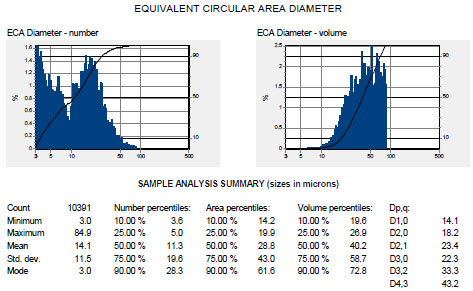The challenge
Coal Powder has many industrial applications. It is generally processed by crushing, grinding or pulverizing of coal. Because of the brittle nature of coal, the sample shapes obtained are very irregular once processed. Powder shape has always influenced the way particles flow, compact and perform in their final use. Therefore, particle shape analysis has been of interest to customers using coal and processing coal.
As with all particle shape analyzers that render numerous shape measures and data, the key is to utilize the large amount of particle shape information for each particle measured to give the user information they can use to identify, monitor, and modify a process to optimize their process. Excessive amounts of low-circularity or low-smoothness particles can negatively impact powder flow and force particle segregation. Size can also have an impact.
In this sample the challenge was to identify milling performance by identifying how the smoothness and circularity of particles changed as the size increased or decreased.
Applicable measures |
Measures used
|

Besides Circularity, as can be seen, high aspect ratio samples were present. These long particles do not flow very well. As a result, quantification of particles based on Aspect Ratio was also done.

The Particle Insight has the ability to correlate any of the shape measures to any other shape measure. This correlation plot is a good tool to idenfity rare events. Above we can see that Although the particles were all showing circularity values between 0.25 (not very round), to 0.75 (more round), there seemed to be two size populations.

Smoothness compared to size is a good correlation to allow the user to better understand the flow ability of the sample.

Size information shown here correlates with what we saw above in the correlation plot. Note it is important to always view your sample histograms both in a Number weighted distribution as well as a Volume weighted distribution as well to obtain a full understanding of your sample.

Aspect Ratio was also used in this sample to quantify the number of stick-like samples present.

